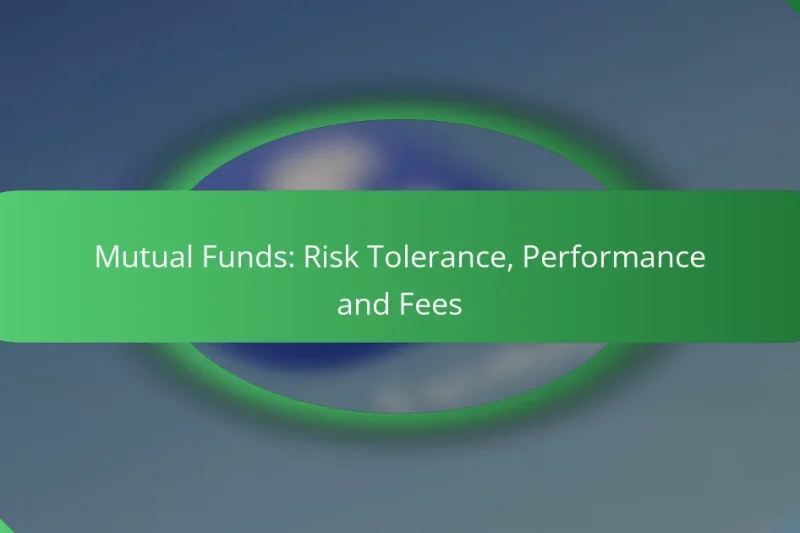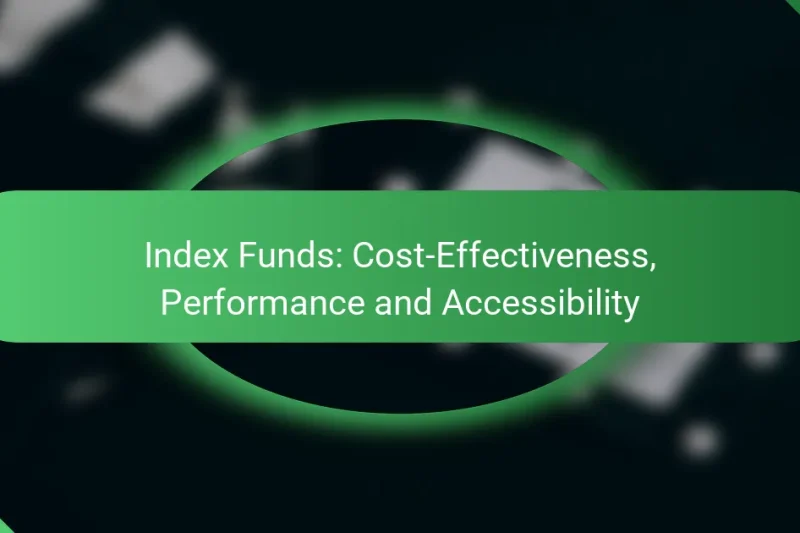Commodities play a crucial role in investment strategies, particularly as a hedge against inflation in Australia. … Commodities: Inflation Hedge, Diversification and Investment StrategiesRead more
Wealth Management System: Investment Options
A wealth management system provides tailored investment solutions designed to meet individual financial goals while managing assets effectively. It encompasses a variety of investment options, including stocks, bonds, real estate, and ETFs, each with unique risk profiles and potential returns. By evaluating your financial needs and the services available, you can select a system that maximizes returns and minimizes risks.
Cryptocurrency: Risks, Rewards and Market Trends
Cryptocurrency presents a unique investment landscape characterized by both substantial risks and potential rewards. While the … Cryptocurrency: Risks, Rewards and Market TrendsRead more
ETFs: Portfolio Balance, Cost Efficiency and Accessibility
Exchange-Traded Funds (ETFs) provide Australian investors with an effective means to achieve portfolio balance through diversification … ETFs: Portfolio Balance, Cost Efficiency and AccessibilityRead more
Mutual Funds: Risk Tolerance, Performance and Fees
Investing in mutual funds requires a clear understanding of your risk tolerance, as it influences the … Mutual Funds: Risk Tolerance, Performance and FeesRead more
Index Funds: Cost-Effectiveness, Performance and Accessibility
Index funds have emerged as a popular investment choice in Australia, offering significant cost-effectiveness through lower … Index Funds: Cost-Effectiveness, Performance and AccessibilityRead more
Stocks vs. Bonds: Which Is Better and When to Use
When deciding between stocks and bonds, it’s essential to understand their fundamental differences: stocks signify ownership … Stocks vs. Bonds: Which Is Better and When to UseRead more
Real Estate Investment Trusts: Benefits, Risks and Returns
Real Estate Investment Trusts (REITs) provide a unique opportunity for investors to gain exposure to the … Real Estate Investment Trusts: Benefits, Risks and ReturnsRead more
What are the best investment options in Australia?
The best investment options in Australia include stocks, bonds, real estate, managed funds, and exchange-traded funds (ETFs). Each option has its own risk profile, potential returns, and suitability depending on individual financial goals.
Stocks
Investing in stocks involves purchasing shares of publicly traded companies. Stocks can offer high returns, but they also come with significant risks due to market volatility.
Consider diversifying your stock portfolio across various sectors to mitigate risks. A common strategy is to invest in blue-chip stocks, which are shares in large, reputable companies known for their stability.
Bonds
Bonds are fixed-income securities where you lend money to an entity, such as a government or corporation, in exchange for periodic interest payments and the return of principal at maturity. They are generally considered safer than stocks.
In Australia, government bonds are a popular choice for conservative investors seeking steady income. Corporate bonds can offer higher yields but come with increased risk.
Real Estate
Real estate investment involves purchasing property to generate rental income or capital appreciation. It can provide a tangible asset and a hedge against inflation.
Investors should consider location, property type, and market trends when investing in real estate. Additionally, be aware of ongoing costs such as maintenance, property taxes, and management fees.
Managed Funds
Managed funds pool money from multiple investors to invest in a diversified portfolio of assets, managed by professional fund managers. This option is suitable for those who prefer a hands-off investment approach.
When selecting a managed fund, review the fund’s performance history, fees, and investment strategy. Look for funds that align with your risk tolerance and investment goals.
Exchange-Traded Funds (ETFs)
ETFs are investment funds that are traded on stock exchanges, similar to stocks. They typically track an index and provide diversification at a lower cost than managed funds.
Investors should consider the expense ratio, liquidity, and tracking error when choosing ETFs. They are a good option for those looking to invest in a broad market or specific sectors without the need for active management.
How to choose a wealth management system?
Choosing a wealth management system involves assessing your financial needs, evaluating potential service providers, and understanding the associated fees. This process ensures you select a system that aligns with your investment goals and offers the best value for your money.
Assess your financial goals
Begin by clearly defining your financial objectives, such as retirement planning, wealth preservation, or aggressive growth. Consider your time horizon and risk tolerance, as these factors will influence the type of investments suitable for you.
For example, if you are planning for retirement in 20 years, a balanced approach with a mix of stocks and bonds may be appropriate. If your goal is to grow wealth quickly, you might lean towards higher-risk investments like equities or real estate.
Evaluate service providers
Research various wealth management firms to find those that specialize in your investment preferences and financial goals. Look for providers with a solid reputation, relevant experience, and a transparent approach to client relationships.
Consider checking reviews, testimonials, and regulatory compliance records. It may also be beneficial to interview potential advisors to gauge their understanding of your needs and their investment philosophy.
Consider fees and charges
Understanding the fee structure of wealth management services is crucial. Common fees include management fees, performance fees, and transaction costs, which can significantly impact your investment returns over time.
For instance, management fees typically range from 0.5% to 2% of assets under management annually. Be wary of hidden charges that could erode your investment gains. Always ask for a clear breakdown of all fees before making a decision.
What are the benefits of using a wealth management system?
A wealth management system offers tailored investment solutions that align with individual financial goals, providing a structured approach to managing assets. Key benefits include personalized strategies, expert guidance, and comprehensive financial planning, all aimed at maximizing returns and minimizing risks.
Personalized investment strategies
Wealth management systems create personalized investment strategies based on an individual’s financial situation, risk tolerance, and long-term objectives. This customization ensures that investment portfolios are aligned with personal goals, whether it’s saving for retirement, funding education, or building wealth.
For example, a young professional might focus on aggressive growth through equities, while a retiree may prefer a conservative approach with fixed-income securities. Regular reviews and adjustments to these strategies help adapt to changing market conditions and personal circumstances.
Access to expert advice
Using a wealth management system provides access to financial experts who can offer insights and recommendations tailored to specific needs. These professionals analyze market trends, economic indicators, and individual portfolios to guide investment decisions.
Clients can benefit from one-on-one consultations, ensuring they understand their investment options and the associated risks. This expert advice can be invaluable, especially during volatile market periods, helping clients make informed choices to protect and grow their wealth.
Comprehensive financial planning
A wealth management system encompasses comprehensive financial planning that integrates various aspects of an individual’s financial life. This includes investment management, tax strategies, estate planning, and retirement savings, ensuring all elements work together towards achieving financial goals.
For instance, a well-structured plan may involve tax-efficient investment strategies that minimize liabilities while maximizing returns. Regular assessments of the financial plan can help adapt to life changes, such as marriage, children, or career shifts, ensuring that the plan remains relevant and effective.
What are the risks associated with investment options?
Investment options come with various risks that can impact returns. Understanding these risks is crucial for making informed decisions and managing potential losses.
Market volatility
Market volatility refers to the fluctuations in the price of securities over time. High volatility can lead to significant gains or losses in a short period, making it essential for investors to assess their risk tolerance before investing.
For example, during economic downturns, stock prices may drop sharply, while in a booming market, they can rise quickly. Investors should consider diversifying their portfolios to mitigate the effects of market volatility.
Liquidity risk
Liquidity risk is the possibility that an investor may not be able to buy or sell an asset quickly without affecting its price. This risk is particularly relevant for investments in less-traded securities or real estate.
To manage liquidity risk, investors should ensure they have a mix of liquid and illiquid assets. Keeping a portion of the portfolio in cash or cash-equivalents can provide flexibility during market fluctuations.
Credit risk
Credit risk is the chance that a borrower will default on a loan or fail to meet contractual obligations. This risk is particularly pertinent for bond investors who rely on issuers to make interest payments.
Investors can mitigate credit risk by diversifying their bond holdings across different issuers and sectors. Additionally, considering credit ratings from agencies can help gauge the risk associated with specific investments.
How do fees impact investment returns?
Fees can significantly reduce investment returns over time, affecting the overall growth of your portfolio. Understanding the types of fees and their implications is crucial for making informed investment decisions.
Types of fees in investment
Investment fees typically include management fees, trading commissions, and performance fees. Management fees are charged by fund managers for overseeing investments, while trading commissions are incurred when buying or selling assets. Performance fees are additional charges based on the returns generated by the investment.
For example, mutual funds often have management fees that can range from 0.5% to 2% annually. In contrast, exchange-traded funds (ETFs) usually have lower fees, often below 0.5%. Understanding these fees helps investors choose the right investment vehicles.
Impact of fees on long-term returns
Even seemingly small fees can have a substantial impact on long-term investment returns. A 1% fee may not seem significant, but over several decades, it can reduce returns by tens of percent due to compounding effects.
For instance, an investment of $10,000 growing at an average annual return of 7% over 30 years would yield about $76,000. However, if a 1% fee is applied, the final amount could drop to around $57,000. This illustrates the importance of minimizing fees to maximize returns.
Strategies to minimize fees
To reduce the impact of fees on your investments, consider using low-cost index funds or ETFs, which typically have lower management fees compared to actively managed funds. Additionally, be mindful of trading costs when buying and selling assets.
Regularly reviewing your investment portfolio can help identify high-fee investments that may be dragging down your overall returns. Switching to more cost-effective options can lead to better long-term performance.






